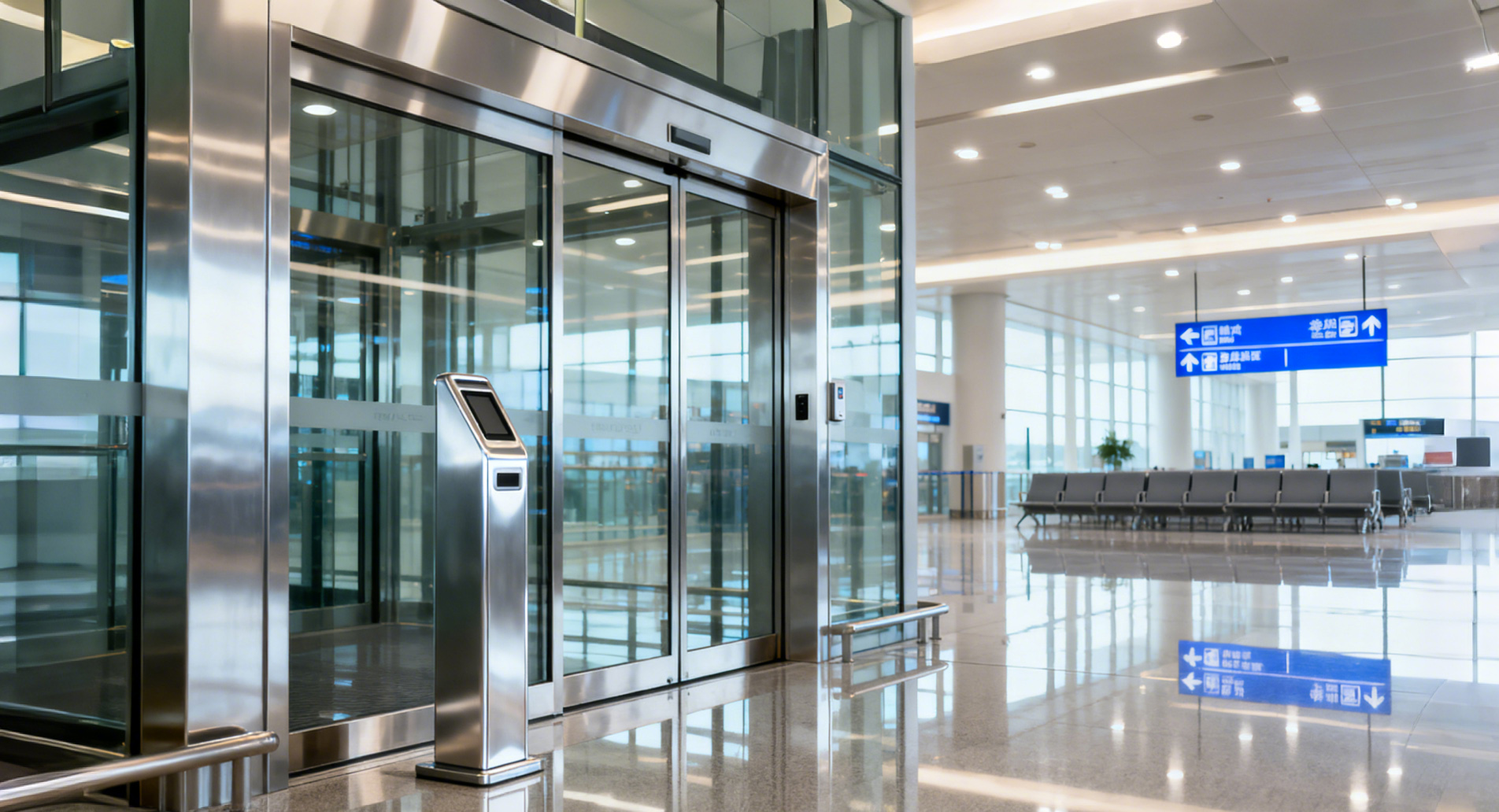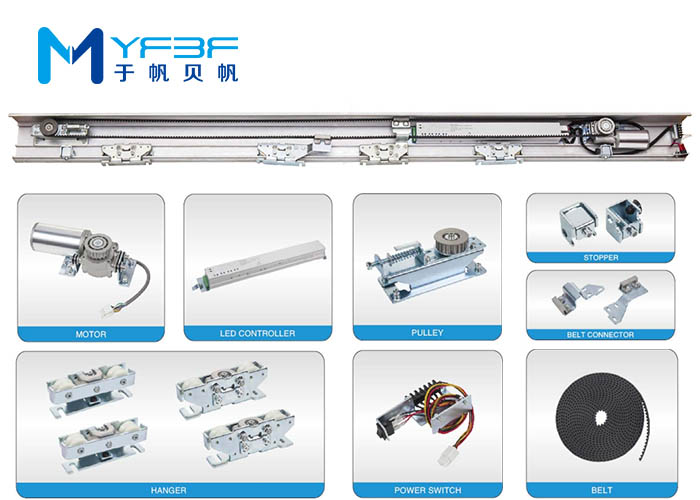
Automatic sliding door operators improve safety through advanced technology. They prevent accidents and ensure smooth operation. These systems also enhance convenience by providing easy access for everyone, including individuals with mobility challenges. The sliding door operator serves as a vital tool in modern architecture, making environments more accessible and secure.
Key Takeaways
- Automatic sliding door operators enhance safety with advanced sensor technology, preventing accidents by detecting obstacles in the door’s path.
- These doors improve accessibility for individuals with mobility challenges, allowing easy entry and exit without physical strain.
- Energy-efficient designs in automatic sliding doors help reduce heating and cooling costs, contributing to lower utility bills.
Safety Features of Sliding Door Operators

Automatic sliding door operators prioritize user safety through advanced sensor technology and robust emergency protocols. These features work together to prevent accidents and ensure smooth operation in various environments.
Sensor Technology
Sensor technology plays a crucial role in the safety of automatic sliding doors. These systems utilize various sensors to detect obstacles and respond accordingly. Common sensor types include:
- Infrared (IR) Sensors: Emit beams to detect obstacles in the door’s path.
- Microwave Sensors: Use reflected signals to identify objects nearby.
- Ultrasonic Sensors: Employ sound waves for detection, even in low-light conditions.
- Contact Sensors: Recognize pressure from obstacles, stopping the door’s movement.
- Vision Sensors and Cameras: Analyze surroundings using computer vision for enhanced detection.
- Motion Sensors: Detect movement near the door, ensuring timely responses.
- Advanced Control Systems: Integrate data from multiple sensors for comprehensive safety.
- Safety Edges: Respond to physical contact with the door, preventing injuries.
Infrared and ultrasonic sensors significantly enhance safety by detecting obstacles in the door’s path. They work together to provide redundancy; if one sensor fails, the other can still function. Infrared sensors quickly stop or reverse the door’s movement when they detect an obstruction. Ultrasonic sensors, on the other hand, use sound waves to identify obstacles regardless of light conditions.
Emergency Protocols
In emergencies, automatic sliding door operators must ensure safe egress. They are equipped with several essential features:
| Emergency Feature | Description |
|---|---|
| Emergency Power Backup | Provides temporary power during outages to ensure doors operate for safe evacuations. |
| Battery-Powered Systems | Standalone power sources that allow doors to function during extended power disruptions. |
| Manual Release Mechanisms | Enable manual operation of doors in emergencies when power is unavailable. |
| Fire Alarm Integration | Triggers doors to remain open during fire emergencies for unimpeded evacuation. |
| Proximity Sensors | Detect individuals nearby to keep doors open, preventing accidents during evacuations. |
| Mechanical Locks and Latches | Allow for securing doors in emergencies to prevent unauthorized access. |
These protocols ensure that automatic sliding doors remain functional during power failures or emergencies. They provide maneuvering clearance or standby power to operate the door, allowing for safe and efficient egress. The integration of these safety features makes automatic sliding door operators a reliable choice for various settings, including commercial spaces and healthcare facilities.
Convenience Aspects of Sliding Door Operators
Automatic sliding door operators significantly enhance convenience in various settings. They provide ease of access for all users, including those with mobility challenges, and contribute to energy efficiency in buildings.
Ease of Access
Automatic sliding doors are designed to meet accessibility standards, ensuring that everyone can navigate through them effortlessly. These doors must provide a minimum clear opening width of 32 inches when fully opened. Additionally, the maximum force required to operate these doors is limited to just 5 pounds. This design allows individuals using mobility aids to pass through safely.
Key features that enhance accessibility include:
- Level Landings: Accessible doors require level landings on both sides, along with additional maneuvering clearances for wheelchair users. Clearances must extend 18 inches to the side and 60 inches away from the door.
- Automatic Operation: Automatic sliding doors eliminate the need for manual operation, which is especially beneficial for individuals with limited strength or mobility. They improve foot traffic flow, making entry and exit easier for all users.
- Increased Independence: Seniors and individuals with disabilities can operate these doors without assistance, promoting independence and enhancing their overall quality of life.
Users with mobility challenges report that automatic sliding door operators significantly enhance their ability to move freely. These systems allow individuals to enter and exit spaces without physical strain, making daily activities more manageable.
Energy Efficiency
Modern automatic sliding door operators incorporate energy-saving designs that significantly reduce energy consumption. They utilize intelligent control systems to optimize performance, ensuring that doors open only when needed. This design minimizes energy loss and contributes to lower heating and cooling costs.
| Door Type | Energy Efficiency Description | Impact on Energy Costs |
|---|---|---|
| Automatic Doors | Designed to open only when needed and close quickly, minimizing energy loss. | Reduces heating and cooling costs over time. |
| Manual Doors | Efficiency depends on user behavior; can lead to energy loss if left open. | Potentially higher energy costs if misused. |
Automatic sliding doors help maintain energy efficiency in buildings by minimizing air exchange. They utilize double-glazed, thermally broken frames and integrated airlocks to maintain internal temperatures. Smart sensors optimize opening times, reducing unnecessary heat loss in winter and cool air loss in summer.
By minimizing energy consumption, energy-efficient doors help lower utility bills, particularly beneficial in large buildings with multiple entry points and high foot traffic. The quick opening and closing of these doors contribute to a more stable indoor temperature, leading to significant energy savings.
Real-World Applications of Sliding Door Operators
Automatic sliding door operators find extensive use in various environments, enhancing safety and convenience. Their applications span commercial spaces, healthcare facilities, and residential settings.
Commercial Spaces
In retail environments, automatic sliding doors significantly improve customer experience. They allow for smooth entry and exit, especially during busy hours. The following table highlights common applications of different door types in commercial settings:
| Type of Door | Common Applications |
|---|---|
| Sliding Doors | Retail stores, hotels |
| Swing Doors | Office buildings, schools, healthcare |
| Revolving Doors | Airports, hotels, office buildings |
| Folding Doors | Healthcare facilities, retail stores |
| Telescopic Doors | Areas requiring wider openings in limited space |
Automatic doors enhance safety by preventing accidents caused by manual doors closing unexpectedly. They also promote hygiene by eliminating the need to touch handles, which is especially important in today’s health-conscious environment.
Healthcare Facilities
In healthcare settings, automatic sliding door operators play a vital role in infection control. They facilitate hands-free operation, minimizing physical contact with surfaces. This feature is crucial in maintaining sterile environments, particularly in operating rooms and isolation areas. The following table outlines key safety regulations governing their installation:
| Code/Standard | Description |
|---|---|
| I-Codes Section 1010.3.2 | Requires compliance with ANSI/BHMA standards for automatic doors. |
| NFPA 101 Section 7.2.1.9 | Addresses powered door leaf operation and mandates compliance with ANSI/BHMA standards. |
| IBC Section 1010.3.2 | Requires power-operated doors to swing in the direction of egress during emergencies. |
These regulations ensure that automatic sliding doors meet safety standards, providing secure access for patients and staff.
Residential Use
In residential settings, automatic sliding door operators enhance security and convenience. They can integrate with access control systems, providing an additional layer of security. The following table summarizes key features that improve home security:
| Feature | Description |
|---|---|
| Access Control Integration | Integrates with systems like magnetic locks and sensors for enhanced security. |
| Safety Beam Photocells | Detects obstacles, preventing the door from closing on people or objects. |
| Electric Locks | Ensures the door remains locked when not in use, providing peace of mind. |
| Smart Home Connectivity | Allows for remote monitoring and control, improving overall security management. |
Automatic sliding doors not only improve accessibility but also enhance the overall quality of life for residents, making them a valuable addition to modern homes.
Automatic sliding door operators play a crucial role in modern architecture. They enhance safety and convenience across various environments. These doors offer numerous benefits:
- Improved accessibility for individuals with disabilities.
- Enhanced security through customizable access features.
- Energy efficiency by reducing heat loss.
Their advanced safety features and user-friendly design significantly improve the experience for all users. Embracing these systems leads to a more accessible and secure future.
FAQ
What are the main benefits of automatic sliding door operators?
Automatic sliding door operators enhance safety, improve accessibility, and promote energy efficiency in various environments.
How do sliding door operators improve accessibility?
These operators allow easy entry for individuals with mobility challenges, ensuring compliance with accessibility standards.
Are automatic sliding doors energy-efficient?
Yes, they minimize energy loss by optimizing opening times and maintaining stable indoor temperatures, reducing heating and cooling costs.
Post time: Sep-11-2025



